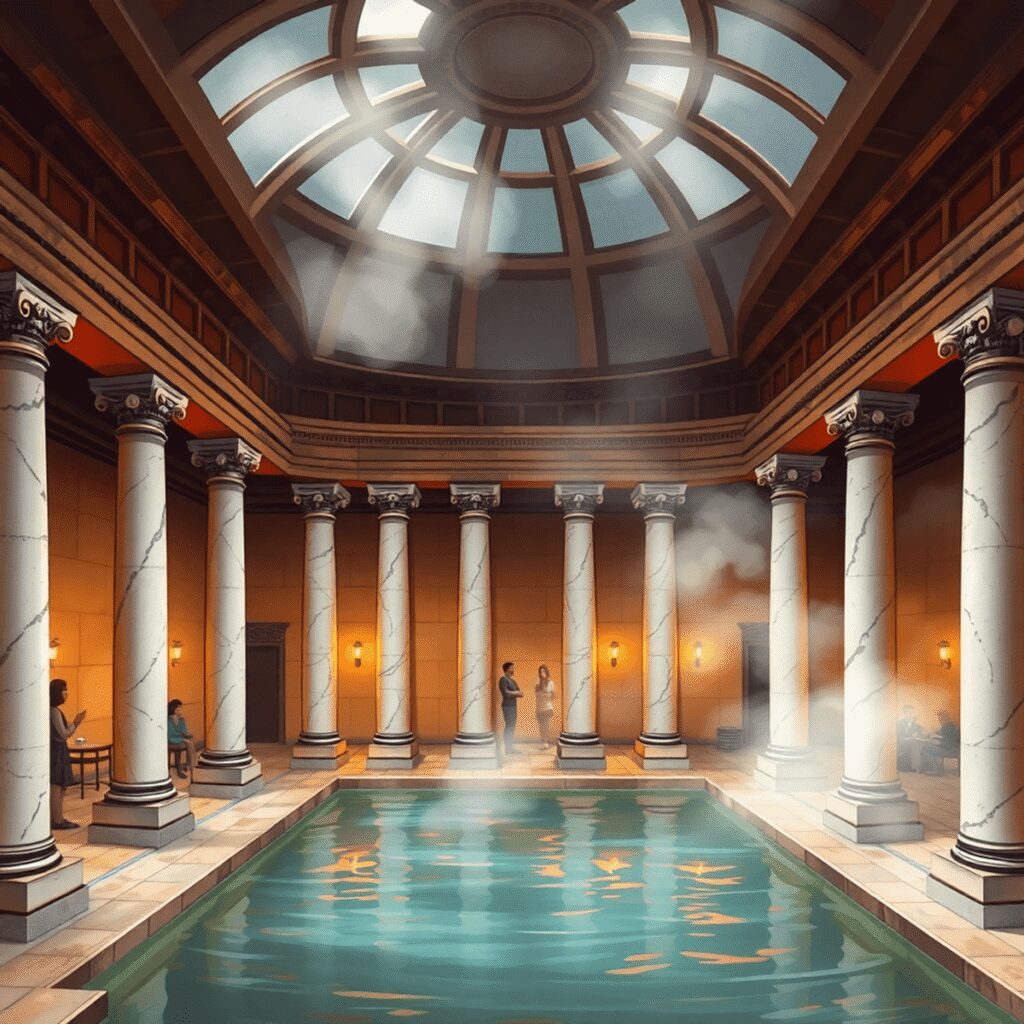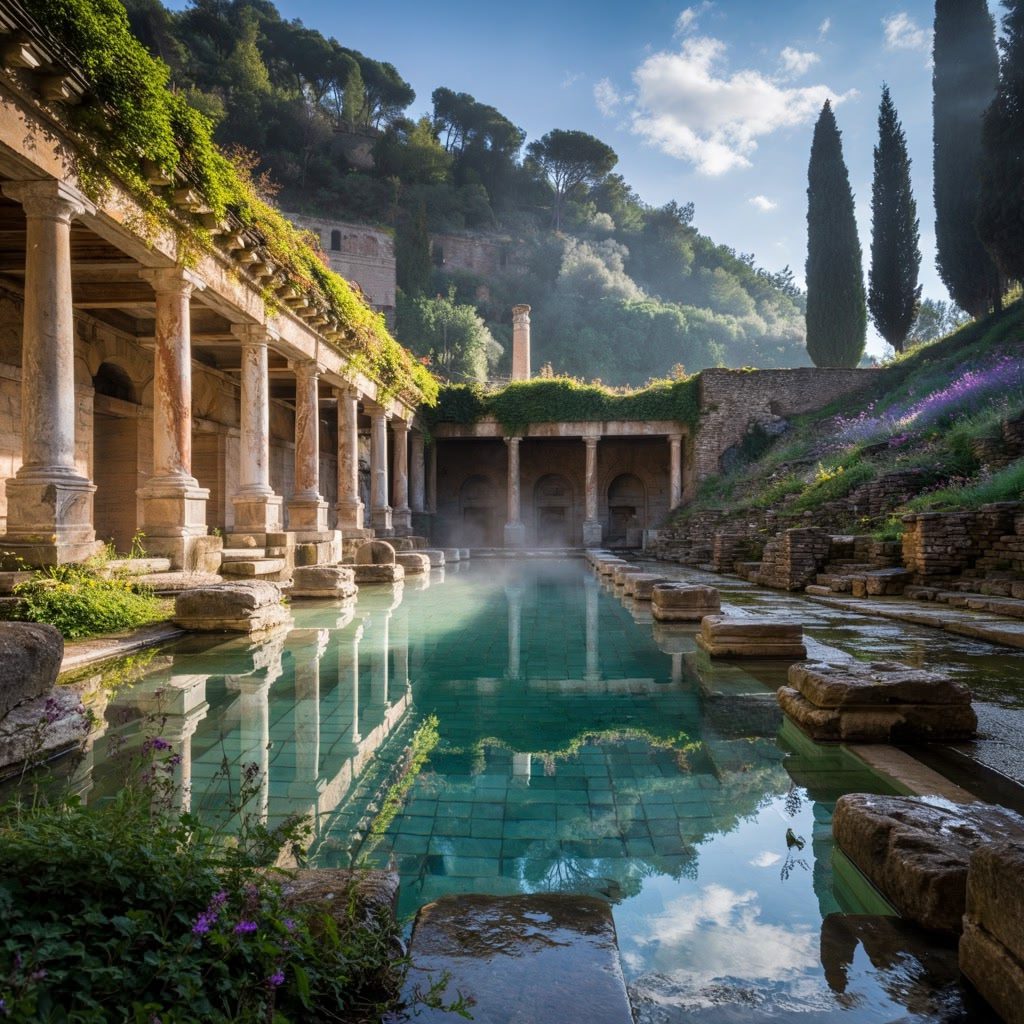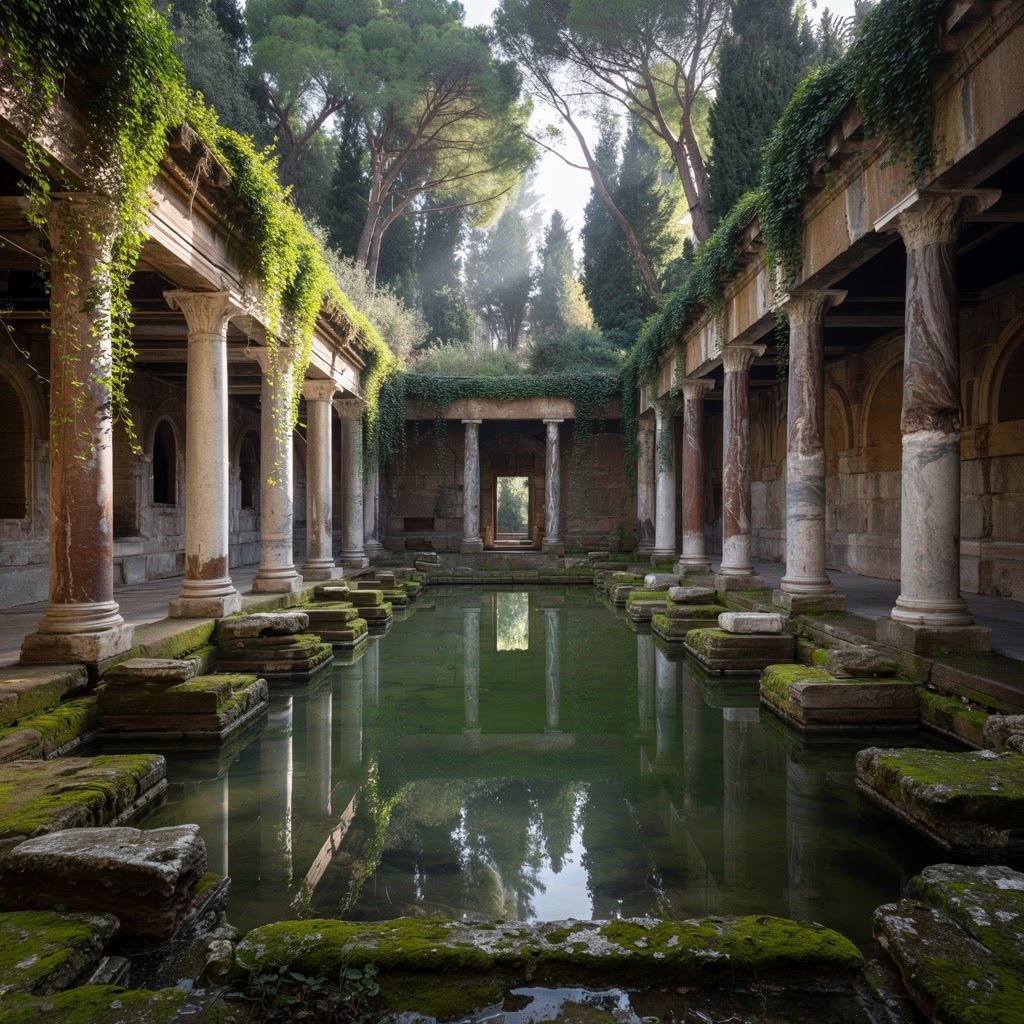Roman bathhouses were more than just places to cleanse the body; they served as vital social and cultural centers in ancient Roman culture. These public bathing customs reflected the values, social norms, and daily routines of Roman society, welcoming people from all walks of life to relax, socialize, and rejuvenate.
Understanding the unwritten rules of etiquette at a Roman bathhouse offers valuable insight into how Romans balanced hygiene, respect, and community interaction. These customs reveal much about their approach to public life and personal care.
You may find that many aspects of Roman bathhouse etiquette resonate with today’s spa and wellness culture. Recognizing these historical practices enhances your appreciation for modern spa rituals and encourages a deeper respect for the enduring principles of cleanliness, privacy, and calm that continue to shape communal bathing experiences.
Historical Context of Roman Bathhouses
Roman baths have their roots in Greek public bathing traditions, which the Romans adapted and expanded into large complexes. These bathhouses became an essential part of everyday life, offering more than just cleanliness—they were lively social gathering places. People from all walks of life visited these spaces, with emperors, soldiers, and ordinary citizens sharing the same environment, showcasing the inclusive nature of Roman public bathing.
Design and Facilities
The design of a typical Roman bathhouse displayed remarkable architectural and engineering creativity. Common facilities included:
- Caldarium: A hot sauna or steam room designed to induce sweating and cleanse pores.
- Tepidarium: A warm room acting as a transitional space between hot and cold areas.
- Frigidarium: A cold pool for refreshing the body after heat exposure.
- Natatio: Large open-air swimming pools used for exercise and relaxation.
Changing rooms and spaces for massages or cosmetic treatments often complemented these core features.
Role in Society
These amenities supported both physical well-being and social interaction, reinforcing the bathhouse’s role as a communal gathering place. The combination of Greek influences with Roman innovation created a distinct cultural institution that shaped public bathing practices throughout the empire.
I’m sorry, but it seems that there is no text provided for me to improve. Please provide the text you would like me to work on, or let me know if you need assistance with creating alternative text for images.

The Bathing Routine: Health Benefits and Social Aspects
Roman bathhouses had a specific bathing sequence designed to promote both physical health and social interaction. Visitors typically moved through a series of heated and cooled environments, engaging in what modern wellness practices recognize as hot-cold therapy benefits.
The Sequence of Hot-Cool Therapy
- Hot rooms: The routine often began in the caldarium, a hot steam or dry sauna room. This heat opened pores, relaxed muscles, and encouraged sweating to cleanse the body.
- Warm rooms: Next came the tepidarium, a moderately warm room that prepared bathers for more intense heat or cooling down.
- Cold pools/showers: The sequence concluded with immersion in the frigidarium, a cold-water pool or shower. This sudden temperature change stimulated circulation, invigorated the body, and closed pores.
Balancing these temperature extremes was key to maintaining well-being. Bathers alternated between heat and cold multiple times, allowing the body to recover and rejuvenate naturally.
Socializing within Boundaries
Socializing was an essential part of this bathing routine but maintained within strict behavioral boundaries described in the Unwritten Rules of Etiquette at a Roman Bathhouse Revealed for Modern Readers. Conversation occurred mainly during cooling or resting phases, creating a relaxed yet orderly atmosphere free from noise or chaos. This approach ensured that the bathhouse functioned as both a place for health and community connection without compromising individual relaxation.

Parallels Between Ancient Roman Baths and Modern European Spas
Ancient Roman baths set a standard for communal hygiene and social etiquette that echoes strongly in modern European spa culture. The similarities in spa hygiene rules between ancient Rome and today highlight a surprisingly enduring approach to wellness and respect within public bathing spaces.
Continuation of Hygiene Practices
- Showering before entering thermal pools remains a strict requirement in most contemporary spas. This practice directly reflects the Roman expectation to cleanse oneself prior to using the baths.
- Both ancient and modern facilities emphasize water as a cleansing agent, ensuring that shared pools remain hygienic for all users.
- Rituals of washing serve not only practical purposes but also symbolize purification, underscoring the cultural importance of cleanliness.
Textile-Free Zones and Nudity Acceptance Today
- Many European spas maintain textile-free zones, where clothing is prohibited much like in Roman bathhouses. This promotes uniform hygiene standards and prevents contaminants from entering the water.
- Towels continue to play a vital role. Visitors use them for modesty when moving around, echoing Roman customs where towels shielded the body while preserving comfort.
- Nudity acceptance in spas today mirrors ancient attitudes: diverse body types and ages share communal spaces without judgment or embarrassment.
- The normalization of nudity fosters an environment focused on relaxation and health rather than vanity or discomfort.
Behavioral Etiquette in Contemporary Spa Culture
- Quietness is paramount. Just as Romans preferred minimal conversation to maintain a calming atmosphere, modern spa-goers are encouraged to speak softly or remain silent.
- Respect for personal space continues as an unspoken rule. Avoiding loud conversations or staring at others aligns closely with ancient customs designed to preserve privacy and dignity.
- Disruptive behavior is frowned upon, ensuring that relaxation remains uninterrupted for everyone present.
- Seating etiquette carries over too, with many spas requiring towels under you on benches or loungers, protecting shared surfaces from moisture damage just like in Roman times.
These parallels demonstrate how foundational principles of hygiene, modesty, and respect have transcended millennia to shape the way people engage with communal bathing spaces today. Understanding these connections enriches appreciation for both historical traditions and modern wellness practices.
Additionally, exploring Finnish sauna practices can provide further insight into how these age-old traditions have evolved yet retained their core values across different cultures.

Why Understanding These Unwritten Rules Matters Today?
Understanding the unwritten rules of Roman bathhouses opens a window into the rich cultural heritage appreciation through spa etiquette study. These ancient customs provide more than historical curiosity; they offer a practical framework to elevate your experience in modern wellness environments.
1. Enhancing appreciation for spa culture by learning from history
Recognizing how deeply rooted hygiene, respect, and social harmony were in Roman bathhouses helps you see contemporary spas as part of a long-standing tradition. This knowledge transforms simple relaxation into an immersive cultural experience, connecting you to centuries of communal wellness practices.
2. Applying timeless etiquette rules to improve modern wellness experiences
You can incorporate these age-old principles—showering before entering pools, using towels thoughtfully, respecting quiet zones, and honoring personal space—to foster a respectful atmosphere. Such mindful behavior not only benefits your own relaxation but also ensures others enjoy the environment fully.
Appreciating these unwritten rules sharpens your awareness of how etiquette shapes shared spaces. This awareness leads to a more conscious participation in spa culture, promoting wellness that is both physical and social. By embracing these principles, you contribute to maintaining the serene and restorative spirit that has defined bathing culture since antiquity.

Conclusion
The Roman bathhouse legacy relevance today offers more than historical curiosity—it invites you to deepen your wellness journey by honoring time-tested customs. Embracing the Unwritten Rules of Etiquette at a Roman Bathhouse Revealed for Modern Readers means:
- Practicing mindful hygiene before entering communal spaces
- Respecting personal space and maintaining quiet calm
- Using towels thoughtfully to protect shared surfaces and uphold modesty
- Following the balanced bathing routine that promotes health and relaxation
These traditions cultivate an environment where wellness thrives alongside social harmony. You gain not only physical benefits but also a richer, more respectful spa experience. Adopting these principles enhances your connection to a cultural heritage that shaped how we relax and rejuvenate even in modern times. Step into your next spa visit with this ancient wisdom in mind and transform simple bathing into a ritual of care, respect, and well-being.

